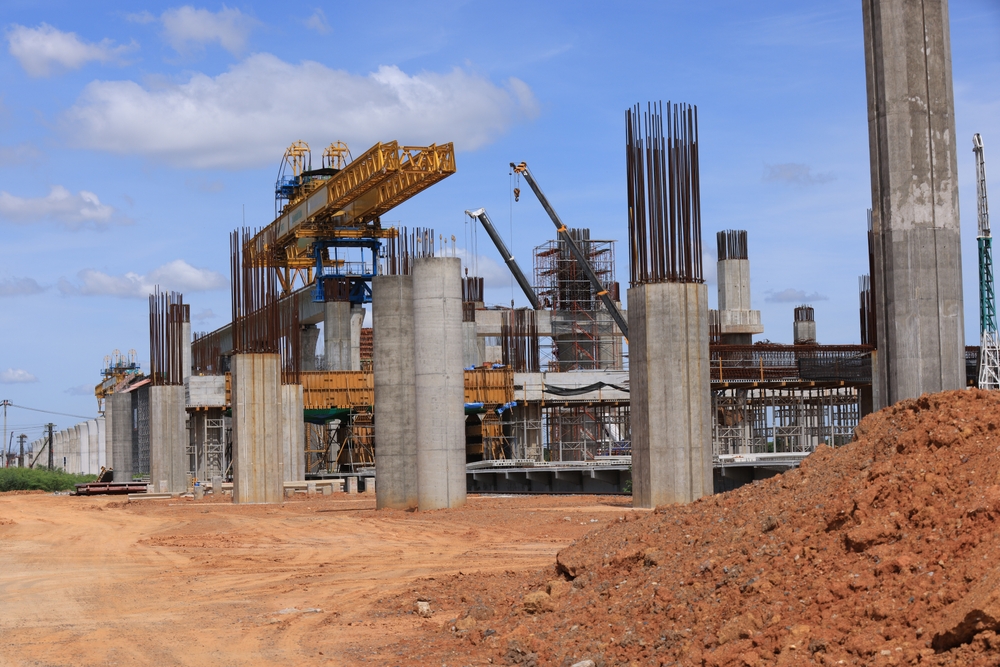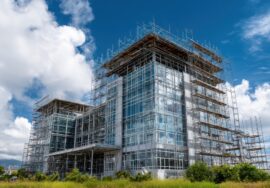Net-Zero Infrastructure: A Vision for a Sustainable Future
Net-Zero Infrastructure: A Vision for a Sustainable Future
The shift towards net-zero infrastructure is an essential part of the global effort to combat climate change. Net-zero infrastructure refers to the development of buildings, cities, and systems that produce as much energy as they consume, resulting in zero net carbon emissions. This ambitious approach is at the forefront of sustainability initiatives, aiming to reduce carbon footprints while fostering growth, innovation, and environmental responsibility.
In this blog, we explore what net-zero infrastructure is, why it is important, and how it is shaping the future of urban development and construction.
What is Net-Zero Infrastructure?
Net-zero infrastructure is designed to balance the energy consumed by the infrastructure with the amount of renewable energy it generates. The goal is to reduce or eliminate greenhouse gas emissions across the entire lifecycle of a project, from planning and construction to operation and decommissioning.
A key principle of net-zero infrastructure is the integration of sustainable design, energy efficiency, and renewable energy sources such as solar, wind, and geothermal. Through these practices, net-zero infrastructure projects aim to achieve carbon neutrality while maintaining functionality and economic viability.
Key Features of Net-Zero Infrastructure
-
Energy Efficiency: Net-zero infrastructure emphasizes the use of energy-efficient materials, designs, and technologies that reduce overall energy consumption. High-performance insulation, energy-efficient windows, and passive heating and cooling strategies are common features.
-
Renewable Energy Integration: These projects integrate renewable energy sources, such as rooftop solar panels, wind turbines, and geothermal energy systems, to generate clean energy on-site. This ensures that the infrastructure can meet its energy needs sustainably.
-
Carbon Offsetting: In cases where it is difficult to eliminate all emissions, carbon offsetting programs are used to balance out the emissions. This could involve investing in projects that reduce or capture carbon, such as reforestation or large-scale renewable energy projects.
-
Sustainable Materials: Net-zero infrastructure relies on sustainable materials that minimize environmental impact. For example, the use of recycled or low-carbon building materials can significantly reduce the carbon footprint of construction projects.
-
Smart Technologies: Net-zero infrastructure often incorporates smart technologies, including energy management systems, to monitor and optimize energy use in real-time. These technologies ensure that energy consumption is always in balance with renewable energy production.
Why is Net-Zero Infrastructure Important?
1. Combating Climate Change
The construction and operation of buildings and infrastructure account for a significant portion of global greenhouse gas emissions. Net-zero infrastructure helps address this issue by reducing emissions and mitigating climate change. As cities and industries adopt net-zero principles, they contribute to the global goal of limiting global warming and reducing carbon emissions.
2. Energy Independence
One of the key advantages of net-zero infrastructure is energy independence. By generating their own renewable energy, these buildings and systems reduce reliance on external energy sources, which are often powered by fossil fuels. This can help mitigate the economic and geopolitical risks associated with fluctuating energy prices and supply disruptions.
3. Cost Savings
While the initial investment in net-zero infrastructure may be higher due to the integration of renewable energy systems and energy-efficient technologies, the long-term savings can be substantial. Lower energy costs, reduced maintenance, and incentives for sustainable building practices often offset the upfront costs. In addition, these projects tend to have a longer lifespan and lower operational costs.
4. Sustainability and Resource Conservation
Net-zero infrastructure promotes the use of sustainable materials, water conservation systems, and waste reduction strategies. This helps conserve natural resources and minimizes the environmental impact of construction. By adopting these practices, net-zero infrastructure ensures that future generations inherit a healthier and more sustainable planet.
5. Attracting Green Investments
The demand for sustainable and socially responsible investments is growing. Investors and stakeholders are increasingly interested in projects that prioritize sustainability and environmental impact. Net-zero infrastructure projects are more likely to attract green investments, as they align with the global movement toward responsible, sustainable development.

How Are Net-Zero Infrastructure Projects Being Implemented?
1. Net-Zero Buildings
One of the most prominent examples of net-zero infrastructure is net-zero buildings. These buildings are designed to generate as much energy as they consume, often through the use of solar panels, wind turbines, and other renewable energy systems. Additionally, they feature high-efficiency appliances, advanced insulation, and smart energy management systems to minimize energy consumption.
Many commercial and residential buildings worldwide are adopting net-zero principles, contributing to the creation of sustainable cities and communities. Cities like Vancouver, California, and London have set ambitious targets for net-zero building standards in their urban development plans.
2. Smart Cities
Net-zero infrastructure plays a crucial role in the development of smart cities. These cities integrate technology, data, and renewable energy solutions to optimize urban systems such as transportation, waste management, and water supply. By implementing smart grids, energy-efficient buildings, and sustainable transportation options, smart cities are helping to create a low-carbon future.
3. Transportation Infrastructure
Another key component of net-zero infrastructure is the development of sustainable transportation networks. Electric vehicles (EVs), high-speed rail, and green public transportation systems help reduce the carbon footprint of urban mobility. Many cities are incorporating EV charging stations, bike lanes, and pedestrian-friendly designs to promote low-carbon transportation.
4. Renewable Energy Projects
Large-scale renewable energy projects, such as wind farms, solar parks, and hydroelectric plants, are essential to achieving net-zero infrastructure goals. These projects generate clean, renewable energy that can be used to power cities, buildings, and industrial operations. By integrating renewable energy into the grid, these projects reduce the reliance on fossil fuels and promote sustainability.
Examples of Net-Zero Infrastructure Projects
Several cities and organizations around the world are leading the way in adopting net-zero infrastructure:
-
The Bullitt Center in Seattle: This net-zero building is a leading example of sustainable design, featuring energy-efficient systems, solar panels, and a rainwater harvesting system. It generates more energy than it consumes and serves as a model for green architecture.
-
Masdar City in Abu Dhabi: Masdar City is a sustainable urban development that is aiming to become the world’s first carbon-neutral city. The city integrates renewable energy, green building practices, and smart technologies to create a sustainable urban environment.
-
The City of Copenhagen: Copenhagen has committed to becoming the world’s first carbon-neutral city by 2025. The city is focusing on renewable energy, sustainable transportation, and energy-efficient buildings to achieve its goal.
Conclusion
Net-zero infrastructure represents a crucial step toward creating a sustainable future. By integrating renewable energy, energy-efficient technologies, and sustainable materials, these projects help reduce carbon emissions and contribute to the global effort to combat climate change. As more cities, buildings, and organizations adopt net-zero principles, they will play a significant role in shaping a low-carbon, sustainable world.
To learn more about implementing net-zero infrastructure and sustainable development, feel free to contact us.
Construction Industry in India
- One of India’s largest construction and engineering companies, Campus Construction Cost Optimization provides services including project management, cost control, and engineering consultancy. For detailed information on their offerings, visit. Construction Industry in India
Read more related articles to enhance your knowledge and make informed decisions
10 Essential Steps in the Building Construction Process
How to Choose the Right Materials for Your Construction Project









